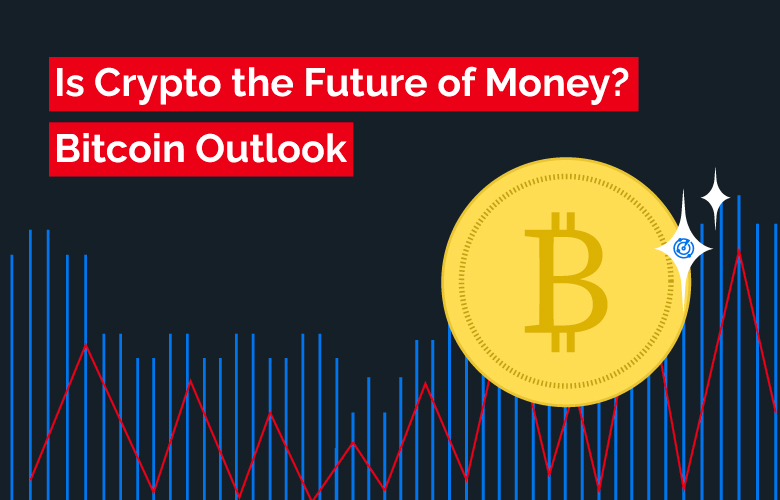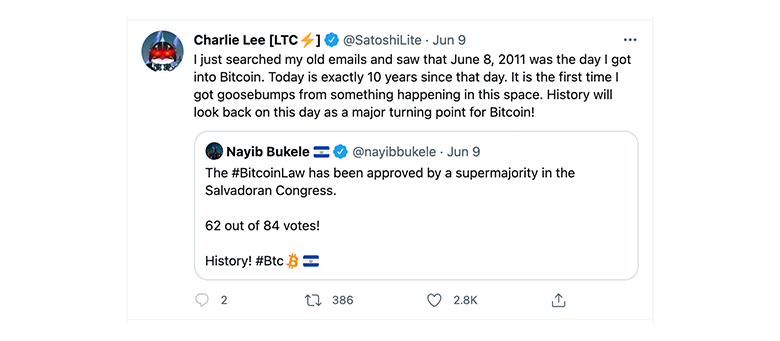July 20, 2021
Protect Your Cryptocurrency with a VPN
Research suggests that global crypto trading grew to 106 million users in January 2021, [...]

WHAT’S IN THIS REVIEW?
Disclaimer: Partnerships & affiliate links help us create better content. Learn how.
How many dollars do you have in your wallet? What about coins? If you’re like me, you have to run to the ATM any time you need cash, or there’s a small stash of coins in your car. The reality, of course, is that most money in circulation is actually digital. Yet, sometimes it seems that very few people have thoroughly explored the implications of that fact.
Somewhere in your bank’s servers sit the digital bits that represent your checking account balance. Mostly, there are no paper bills or coins actually stored anywhere that represent your deposits. In fact, there are no commodities that back up your dollars either (i.e. gold or silver). The dollar is mainly a digital currency today. So, is it not reasonable to consider alternative currencies that may offer us better benefits?
Before we talk about cryptocurrency, let’s stick with the dollar a little longer (I’ll refer to it as USD). Since its value hasn’t been tied to a commodity since 1971, the USD is considered a fiat currency, meaning that it only has value because Uncle Sam says so. Never mind that it has lost 98% of its value since 1913, and most of the money in existence today is pretty new. The Federal Reserve (USD’s controlling body made up of humans rather than transparent, open-source computer code as with crypto) inflates the USD (and thus taxes your savings) when it monetizes federal debt and increases banks’ loanable funds.
Moreover, former Fed Chairman, Alan Greenspan, even claimed in an article prior to his tenure that “[federal] deficit spending is simply a scheme for the confiscation of wealth.” If that’s true (he would be the expert after all), there’s been a lot of confiscation happening lately. Essentially, the USD offers a way by which people who already have a lot of USD can get access to cheap loans and then use that money to drive up asset prices, which they mostly own already (i.e. the rich get richer). It’s all a bit jarring when you first wrap your head around the state of USD. However, it also explains quite clearly why and how cryptocurrency started.
In the wake of the 2008 financial crisis, cryptocurrency emerged as a means for people to control their own money themselves, void of any bank or government manipulation. Without getting too technical, it’s a digital asset meant to be used as money and also tries to prevent the problems that come with a normal digital fiat currency like USD.
The governance of this currency is handled using open-source software and algorithms anyone can view. Changes in the supply of the monetary units (coins) across cryptos are also meant to be predictable (as compared to USD for example). And, the ledger that records transactions is managed by code and is very difficult to hack.
Coins are created in a process called mining that incentivizes the use of computing power to secure and complete transactions on a specific network. Like gold mining, real work goes into the production of a crypto coin (as compared to USD that’s printed from thin air). Finally, they use advanced cryptography (to varying degrees) to secure this entire process. The technical details of each implementation of a cryptocurrency can be found in their respective whitepapers, which we recommend perusing before starting any crypto trading.
On the whole, there’s a lot of speculation around the efficacy of cryptocurrency. Can it replace USD? Or, will it inevitably fizzle out? A lot of this depends on user adoption. One significant blocker for this is price volatility, which occurs in large part due to people’s misunderstanding of the purpose of cryptocurrency (at least in essence).
Contrary to mainstream chatter on the subject, the intended use of crypto is as a stable currency, not an investment vehicle. Using crypto as a means to get rich quick is very risky, especially when a single tweet from Elon Musk can drive down the value of a coin overnight. Instead, cryptocurrency was created as an alternative money system that’s predictable. As more people come to trust and accept it as a form of payment for goods and services, the more stability and legitimacy (and thus value) it will hold. This, research suggests, is already underway.

In January 2021, global crypto trading grew to 106 million users, a 15.7% increase from the previous year. This spike in user adoption was largely driven by the huge growth in DeFi last summer, the massive inflation of the USD, and PayPal offering crypto services. Even more encouraging, as of June 2021, El Salvador became the first country in the world to make Bitcoin legal tender. Charlie Lee, a prominent crypto influencer, reflected on Bitcoin’s road to legitimacy, stating “it is the first time I got goosebumps from something happening in the space” in over ten years.

Looking further into the future, Deutsche Bank in Germany released its Imagine 2030 Report, where it predicts the number of crypto traders to surpass 200 million within a decade. From big corporations to individual thinkers, cryptocurrency is surely picking up steam.
Being realistic here, it’s important to keep in mind that there are always trade-offs. No one money system can solve all our economic problems. No single coin should be used to preserve one’s wealth. Rather, cryptocurrency comes with inherent benefits and limitations users must assess for themselves. After all, the technology was built with individual control at the forefront.
Below are the key advantages and disadvantages of cryptocurrency still wildly up for debate:
Overall, I think we’re a few decades out from really knowing if cryptocurrency will survive its tumultuous start. However, if the convenience of using fiat over crypto becomes negligible, fiat currency usage could very well diminish. The reason we use money is to make trading efficient. So, whatever currency proves to be the most valuable in that sense will win in the long run.
If people realize the limitations of USD as a currency and see how crypto can decentralize the geographical monopolies on money and facilitate better international trade, it could be that cryptos become the best currencies out there. Only time will tell. Though, as with most technology, criticism is at its highest when something is about to take off. After all, lots of people said the internet would die in the basement where it started, too, yet look at it now.
| Cookie | Duration | Description |
|---|---|---|
| __cfduid | 1 month | The cookie is used by cdn services like CloudFlare to identify individual clients behind a shared IP address and apply security settings on a per-client basis. It does not correspond to any user ID in the web application and does not store any personally identifiable information. |
| cookielawinfo-checkbox-advertisement | 1 year | The cookie is set by GDPR cookie consent to record the user consent for the cookies in the category "Advertisement". |
| cookielawinfo-checkbox-analytics | 1 year | This cookies is set by GDPR Cookie Consent WordPress Plugin. The cookie is used to remember the user consent for the cookies under the category "Analytics". |
| cookielawinfo-checkbox-necessary | 1 year | This cookie is set by GDPR Cookie Consent plugin. The cookies is used to store the user consent for the cookies in the category "Necessary". |
| cookielawinfo-checkbox-non-necessary | 1 year | This cookie is set by GDPR Cookie Consent plugin. The cookies is used to store the user consent for the cookies in the category "Non-necessary". |
| cookielawinfo-checkbox-performance | 1 year | This cookie is set by GDPR Cookie Consent plugin. The cookie is used to store the user consent for the cookies in the category "Performance". |
| viewed_cookie_policy | 1 year | The cookie is set by the GDPR Cookie Consent plugin and is used to store whether or not user has consented to the use of cookies. It does not store any personal data. |
| Cookie | Duration | Description |
|---|---|---|
| cookielawinfo-checkbox-functional | 1 year | The cookie is set by GDPR cookie consent to record the user consent for the cookies in the category "Functional". |
| cookielawinfo-checkbox-others | 1 year | No description |